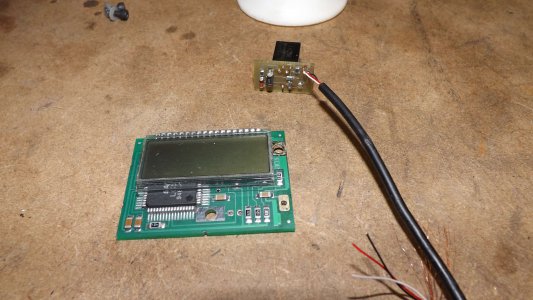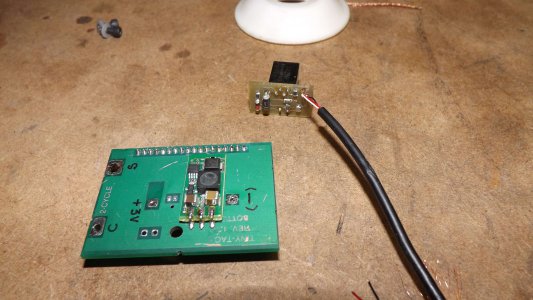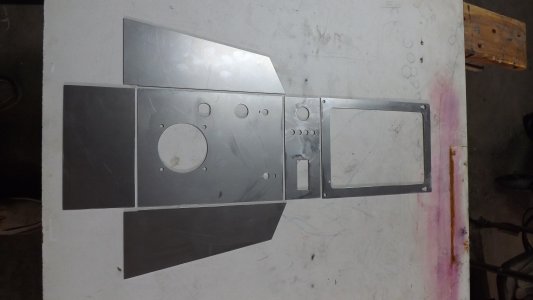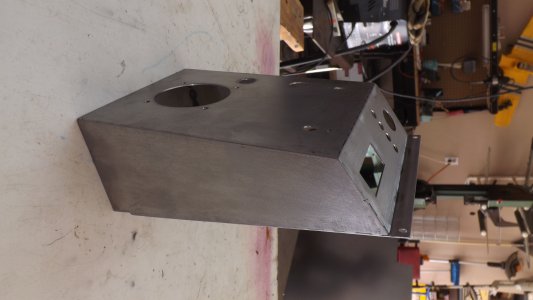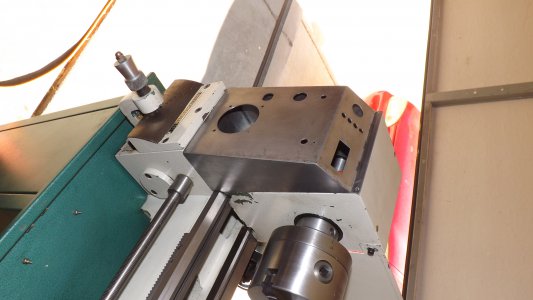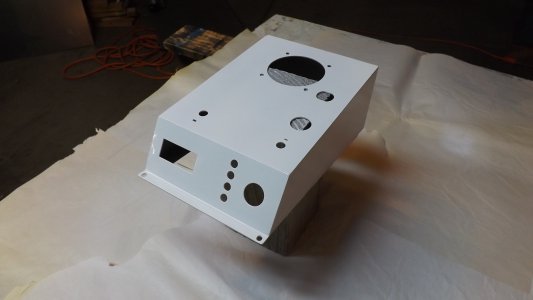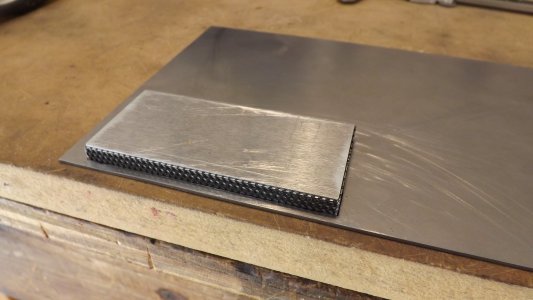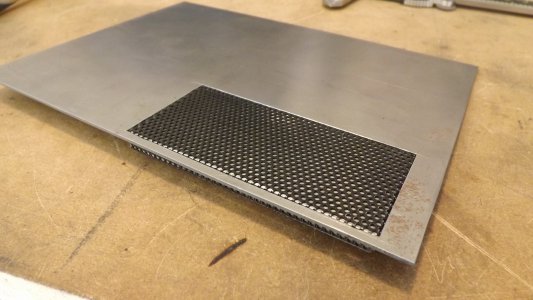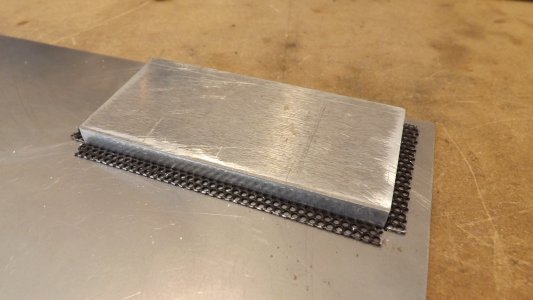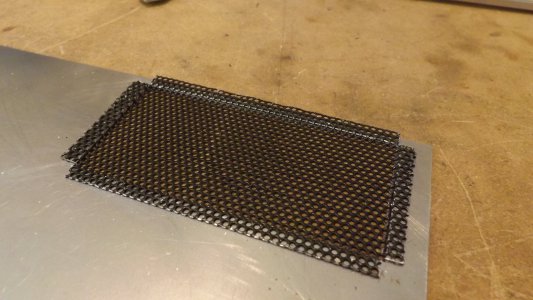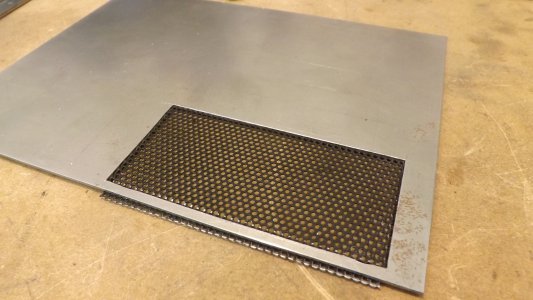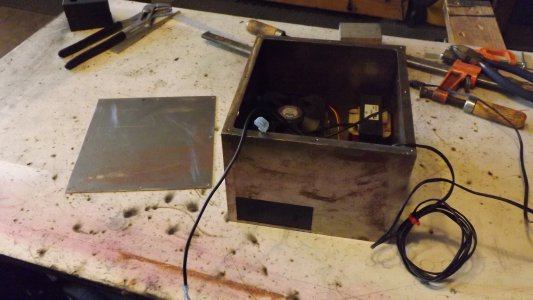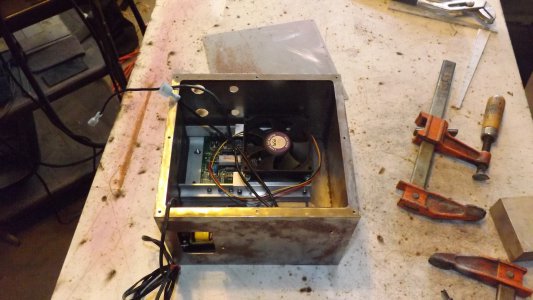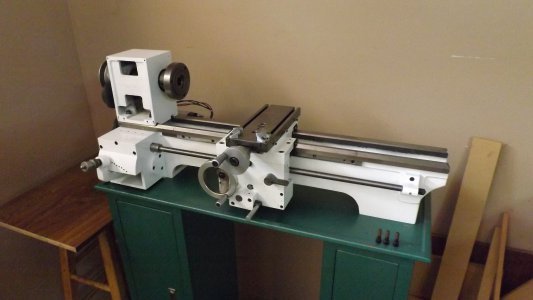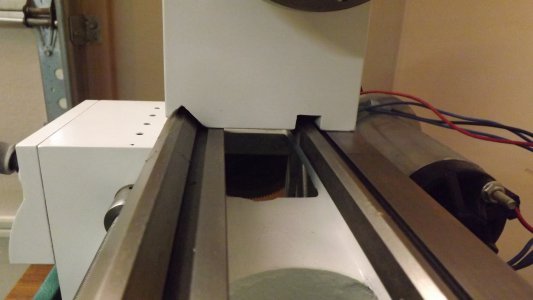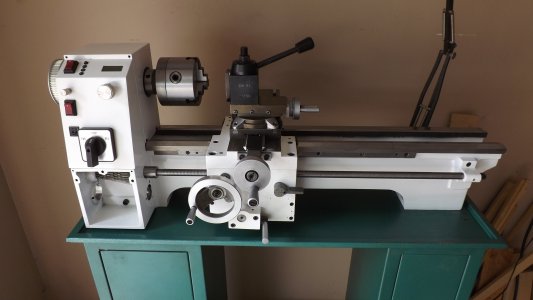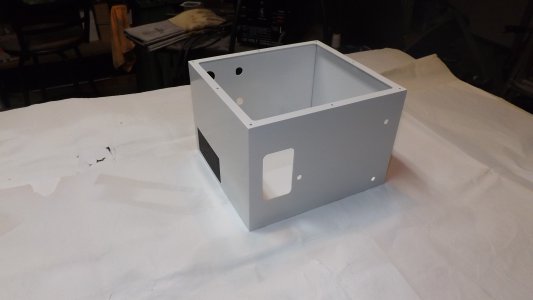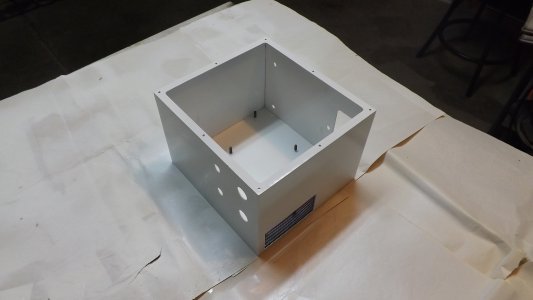Hello all,
I would like to complain about the manufacturing practices regarding the Grizzly G4000 lathe. But... my mind now resides in too deep a state of shock to do anything but laugh and move on with repairs.
I have had my G4000 lathe for several years. I have had my issues like anyone else using a lathe in this price range. Several (external) mods have been employed to make it safer, easier to use and more accurate. The time came for me to replace the worn out AC motor. In the process of preparing her for a DC motor installation, with custom control panel and electrical housing, I decided that the cheap paint job may as well go while I am at it. After all, who orders machines painted in green hammer paint, then repaints them (without taking the machine part) in cheap, house-paint-like white? I like white... but why not just order them that way?
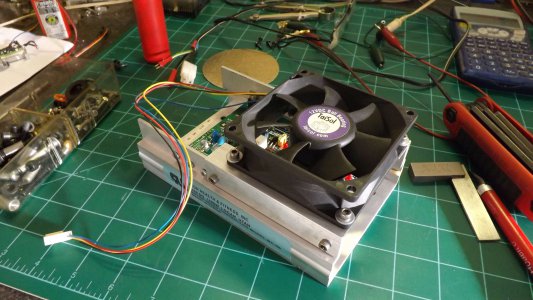
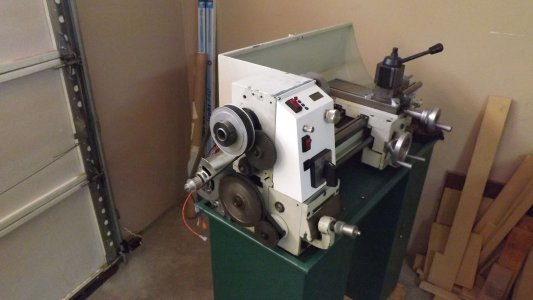
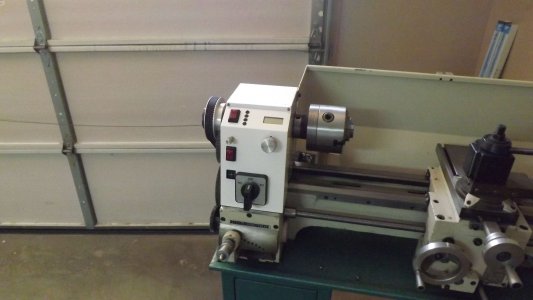
The pictures show the controller with CPU fan, the DC motor installed for testing and the new control panel built and installed. It was at this point I decided to go the new paint route and wound up entering the dark, mysterious world of Asian machines undressed.
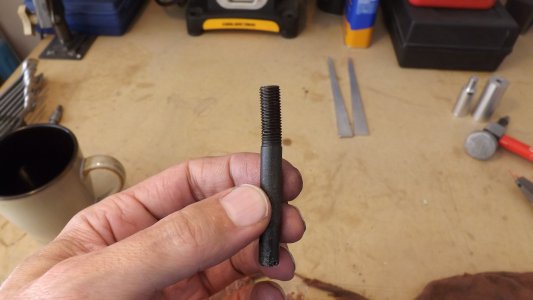
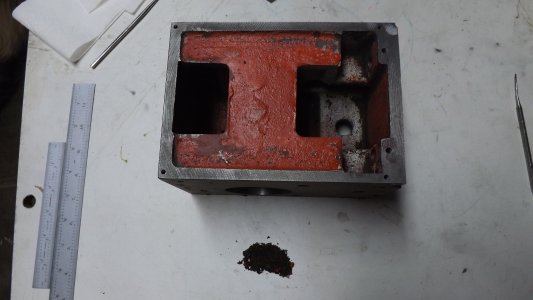
Shown is a bent part from the saddle. Did they not see this was bent before installing it? And... 'how' did it get bent? Next is seen the spindle head, stripped of paint. Casting sand must be breeding in there, as there is plenty of it in every corner. Wiping a finger inside is enough to loosen it. It is no wonder then, why the original bearings sounded like gravel crushers.
In looking at the bottom of the head, it was seen that this was not properly machined at all. Someone used a hand grinder on it, resulting in a not-so-flat surface that rocks when attempting to stand it up. I do believe this rebuild will result in my seeing things in this machine I have never seen before.
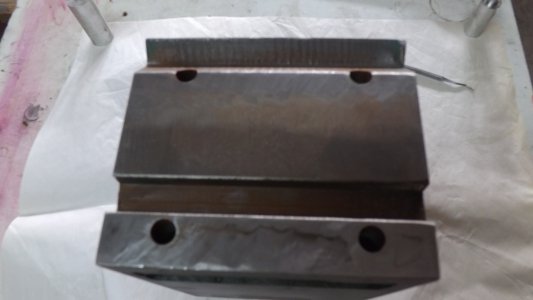
I hope you all can see the hand grinding job. No wonder the head didn't want to stay adjusted for very long. Nothing about it is even 'square'. This rebuild is going to take far longer than I had imagined. Complain to Grizzly? LOL.. no, they probably aren't even aware of any of this is going on in that factory in China. I will post more of this rebuild as I go.






I would like to complain about the manufacturing practices regarding the Grizzly G4000 lathe. But... my mind now resides in too deep a state of shock to do anything but laugh and move on with repairs.
I have had my G4000 lathe for several years. I have had my issues like anyone else using a lathe in this price range. Several (external) mods have been employed to make it safer, easier to use and more accurate. The time came for me to replace the worn out AC motor. In the process of preparing her for a DC motor installation, with custom control panel and electrical housing, I decided that the cheap paint job may as well go while I am at it. After all, who orders machines painted in green hammer paint, then repaints them (without taking the machine part) in cheap, house-paint-like white? I like white... but why not just order them that way?



The pictures show the controller with CPU fan, the DC motor installed for testing and the new control panel built and installed. It was at this point I decided to go the new paint route and wound up entering the dark, mysterious world of Asian machines undressed.


Shown is a bent part from the saddle. Did they not see this was bent before installing it? And... 'how' did it get bent? Next is seen the spindle head, stripped of paint. Casting sand must be breeding in there, as there is plenty of it in every corner. Wiping a finger inside is enough to loosen it. It is no wonder then, why the original bearings sounded like gravel crushers.
In looking at the bottom of the head, it was seen that this was not properly machined at all. Someone used a hand grinder on it, resulting in a not-so-flat surface that rocks when attempting to stand it up. I do believe this rebuild will result in my seeing things in this machine I have never seen before.

I hope you all can see the hand grinding job. No wonder the head didn't want to stay adjusted for very long. Nothing about it is even 'square'. This rebuild is going to take far longer than I had imagined. Complain to Grizzly? LOL.. no, they probably aren't even aware of any of this is going on in that factory in China. I will post more of this rebuild as I go.








